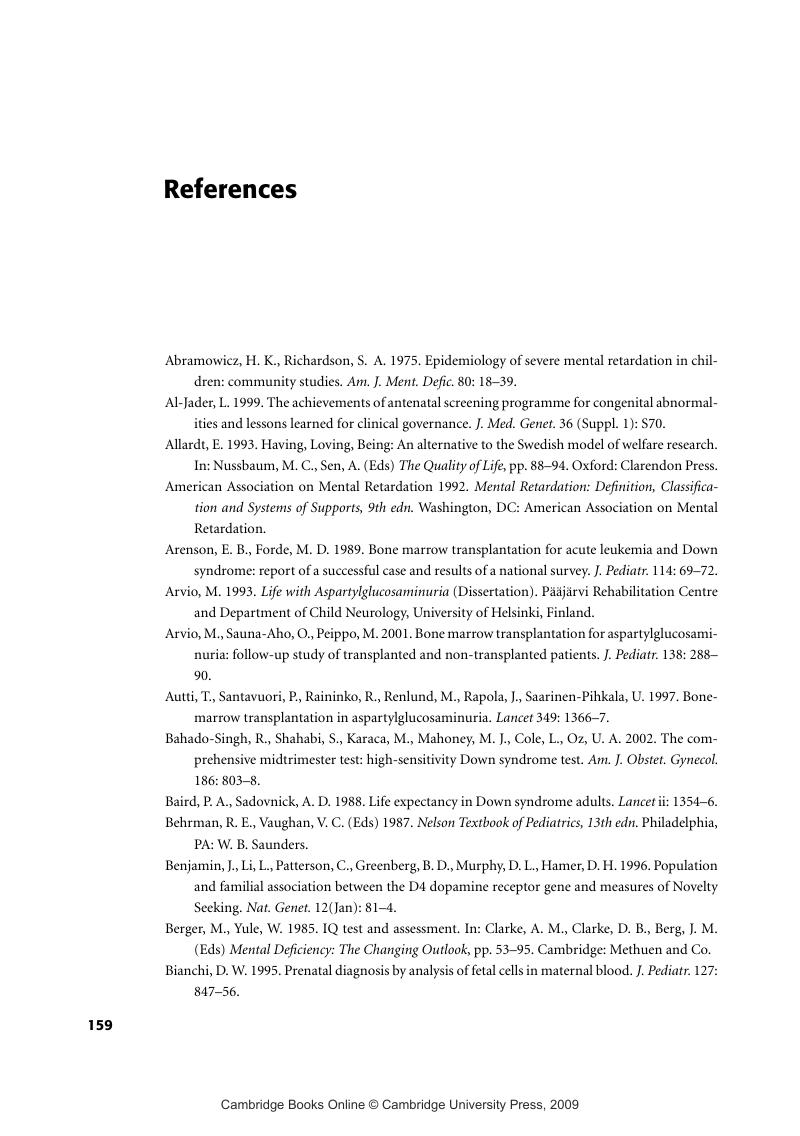Book contents
- Frontmatter
- Contents
- Acknowledgements
- 1 Introduction
- 2 On the definition of intellectual disability?
- 3 Epidemiology of intellectual disability
- 4 Prevention of intellectual disability: general issues
- 5 Prenatal diagnosis and screening
- 6 Genetic counselling
- 7 Why should intellectual disability be prevented?
- 8 Moral status and intellectual disability
- 9 The ethics of prevention in practice: three syndromes
- 10 Conclusion
- References
- Index
- References
References
Published online by Cambridge University Press: 09 August 2009
- Frontmatter
- Contents
- Acknowledgements
- 1 Introduction
- 2 On the definition of intellectual disability?
- 3 Epidemiology of intellectual disability
- 4 Prevention of intellectual disability: general issues
- 5 Prenatal diagnosis and screening
- 6 Genetic counselling
- 7 Why should intellectual disability be prevented?
- 8 Moral status and intellectual disability
- 9 The ethics of prevention in practice: three syndromes
- 10 Conclusion
- References
- Index
- References
Summary

Information
- Type
- Chapter
- Information
- Preventing Intellectual DisabilityEthical and Clinical Issues, pp. 159 - 170Publisher: Cambridge University PressPrint publication year: 2003
